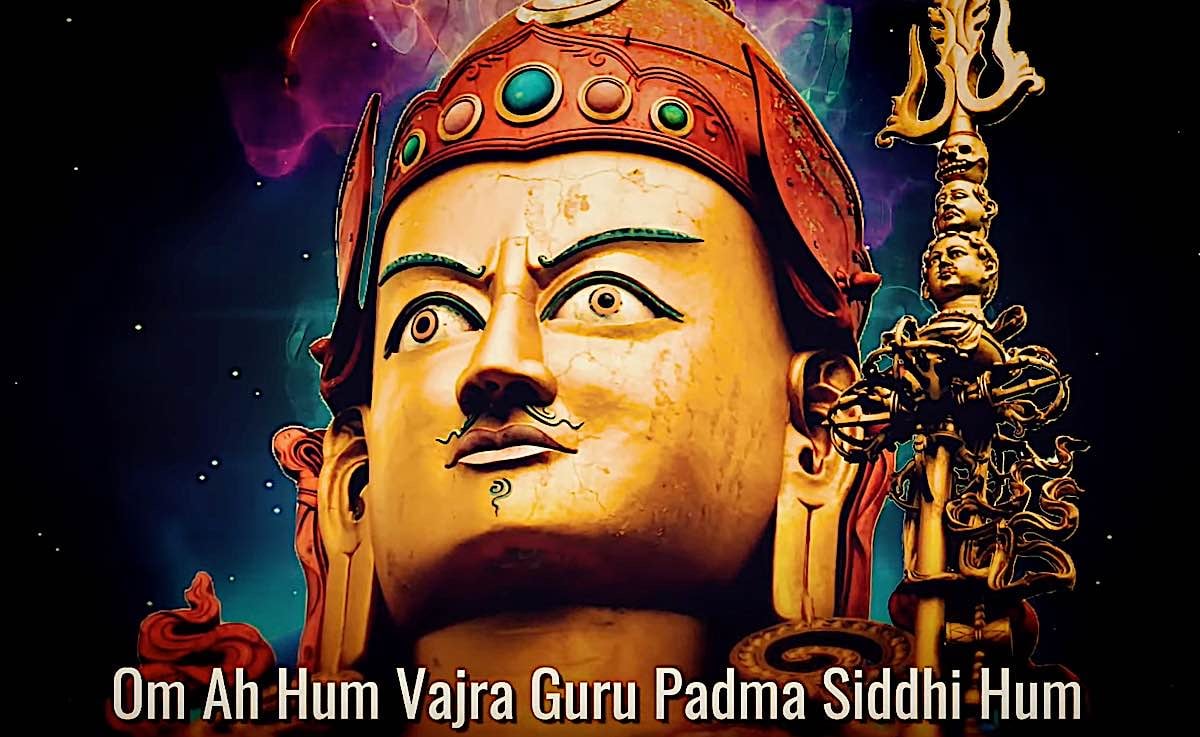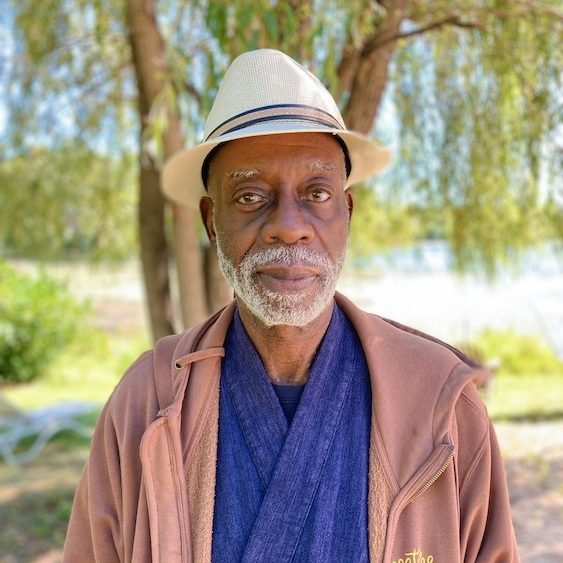The Arrows of Objectification
How papanca leads to conflict The post The Arrows of Objectification appeared first on Tricycle: The Buddhist Review.

 Photo by Daniel Tanase
Photo by Daniel TanaseIn a striking piece of poetry the Buddha once described the sense of samvega—terror or dismay—that inspired him to look for an end to suffering.
I will tell
of how
I experienced
samvega.
Seeing people floundering
like fish in small puddles,
competing with one another—
as I saw this,
fear came into me.
The world was entirely
without substance.
All the directions
were knocked out of line.
Wanting a haven for myself,
I saw nothing
that wasn’t laid claim to.
Seeing nothing in the end
but competition,
I felt discontent.
Rather than trying to solve the problem of competition by looking for a larger puddle for himself or his fellow fish, he looked inside to see why people would want to be fish in the first place. What he found was an arrow embedded in his own heart.
And then I saw
an arrow here,
so very hard to see,
embedded in the heart.
Overcome by this arrow
you run in all directions.
But simply
on pulling it out
you don’t run,
you don’t sink.
This arrow has many names in the Pali Canon, and one of them is papanca (Sanskrit: prapanca), a type of thinking that causes conflict within those who think it, and leads them into conflict with others.
The word papanca is notoriously difficult to translate. As one scholar has noted, it changed meanings frequently over the centuries among Indian Buddhists, the only constant being that it was always regarded as something negative. Modern scholars trying to decipher what it means in the Pali Canon specifically have proposed deriving a translation based on the verbal root from which it’s derived, only to run into the problem that there’s no obvious root that everyone can agree on.
One popular interpretation holds that the word derives from the root, √pañc, which means “spreading” or “expansion.” Based on this interpretation, papanca has been defined as “conceptual proliferation,” a definition that has entered the vocabulary of modern meditation circles to refer to the times when meditators find themselves overrun by thoughts that run riot, coming thick and fast, out of control.
But when the Buddha discusses the problem of papanca, he focuses not so much on the amount or abundance of the thinking as on the type of mental labels—categories and perceptions—it employs. This is a point he makes again and again. The categories and perceptions of papanca are what cause conflict.
So rather than trying to understand the word papanca through etymology, it seems more useful to understand it through the types of mental labels that distinguish it from thinking in general. On this point, the Pali Canon is very clear. The Buddha points out that the root of the classifications of papanca is the perception, “I am the thinker.”
In other words, papanca begins when your thinking takes you, the thinker, as its object. This object then requires other objects in order to survive. This is why “objectification” seems to be the best translation for the word. It’s from treating yourself and the world around you as objects—rather than as events or processes—that the perceptions causing inner and outer conflict derive.
The Canon contains several lists of these perceptions, and in every case states that they ensnare the mind in conflict and difficulty. For instance, AN 4:199 lists 18 “craving-verbalizations” that derive from this perception, verbalizations by which craving ensnares the mind:
“There being ‘I am,’ there comes to be ‘I am here,’ there comes to be ‘I am like this’ … ‘I am otherwise’ … ‘I am bad’ … ‘I am good’ … ‘I might be’ … ‘I might be here’ … ‘I might be like this’ … ‘I might be otherwise’ … ‘May I be’ … ‘May I be here’ … ‘May I be like this’ … ‘May I be otherwise’ … ‘I will be’ … ‘I will be here’ … ‘I will be like this’ … ‘I will be otherwise.’”
These ways of thinking qualify as objectification because they derive their categories—self/not-self, existence/non-existence, here/there—from the mental label, “I am.” The fact that the issues surrounding this mental label can multiply so quickly and spread so far gives some credence to the idea that papanca is proliferation. However, liberating insights can proliferate as well, as when an insight into one of the causes of suffering leads quickly to insights into other causes of suffering. So the question is, what is it about the thought “I am” or “I am the thinker” that leads to ways of thinking that cause inner and outer conflict?
The answer lies in the Buddha’s explanation of what it means to be a being. The act of taking on an identity as a being is primarily a mental act. It’s because you have passion, desire, delight, or craving for something that you identify with it. In identifying with it, you become tied there. That’s what makes you a being. Your choice of what to desire defines the type of being you are. This process happens both on the macro level—in the events leading from death to rebirth—and also on the micro level, as one sense of identity is shed for another on a moment-to-moment basis in the mind.
Externally, as a human being with human desires, you inhabit the same physical world—the same puddle—as other human beings. When you think in terms of objectification and look for food in the human puddle, you inevitably run into conflict with other beings inhabiting the same puddle looking for the same sort of food. Thinking in terms of the categories of objectification spawns the desires that see your sources of food within that puddle as dear to you, and anyone who blocks those sources as not-dear. From this distinction come envy and stinginess, hostility, violence, rivalry, and ill will. These attitudes, in turn, lead to the violence of “taking up rods & bladed weapons, of arguments, quarrels, disputes, accusations, divisive tale-bearing, and false speech.”
If there were a world that could provide all beings with all the food they want, objectification wouldn’t necessarily lead to external conflict. Everyone could eat as much as they liked without interference. But our wants are so insatiable that, as the Buddha said, even if it rained gold coins, it wouldn’t be enough to fulfill our sensual desires. This is why the conflict between the fish in the Buddha’s analogy can never be resolved by finding larger puddles, for no puddle could provide all the water we want.
Yet even if there were a perfectly bountiful world, there would be no escaping the internal conflict brought on by the thought that “I am the thinker.” That’s because when you define yourself, you limit yourself. This idea may seem counterintuitive. After all, part of your sense of who you are revolves around the abilities you develop to get past the limitations standing in the way of getting what you want. But in doing so, you ignore the limitations that come from feeling the need to have desires in the first place.
To begin with, you limit yourself to the condition of continually having to find food. That enslaves you to the conditions surrounding the type of food you want. If you want physical food, you have to submit to all the conditions required for finding physical food and fighting off anyone who might want the same food. You have to identify with a physical body with its physical limitations. Even if you aim for more rarified forms of food, such as the pleasure and rapture that can come from refined states of concentration, you run into the fact that concentration is conditioned and inevitably ends, dropping you back to looking for food on lower levels again.
If these were the only forms of happiness available, and if we couldn’t help but take on the identity of “being” in order to find happiness, we’d simply have to put up with these conflicts and to keep on fighting as best we can. But the Buddha discovered another form of happiness—nibbana (Sanskrit: nirvana)—that can be experienced when the experience of the six senses stops. This happiness doesn’t require taking on an identity, is not subject to conditions, is totally free from hunger, and so is free from conflict. It’s so unobjectified that we’re told not even to ask whether there’s anything left over or not—or both or neither—once it has been attained, for the very concepts of “left over” or “not left over” derive from the thought, “I am the thinker” who would or would not be or have anything left over with the attainment.
The person who attains nibbāna no longer has passion, desire, delight, or craving for anything, and so cannot be defined even as a “person” or a “being.” This is why the Buddha said that arahants—”worthy ones,” meaning those who have attained the goal of practice—after death, can’t be described as existing, not existing, both, or neither, for whatever can’t be defined can’t properly be classified in those terms. However, the unobjectified dimension can be described as the ultimate happiness. In other words, not only is it totally free of suffering and stress, but after the experience of it, you can still come back to the world of the six senses and talk about it. That’s the dimension in which all conflict ends.
Obviously, touching that dimension requires that you abandon objectification, and in particular the forms of objectification that would stand in the way of following the path to the end of objectification.
A necessary skill in the path to true happiness is learning step-by-step how to think in a way that avoids the categories of objectification. That requires a radical shift from the way people and religions ordinarily think. To begin with, it would mean thinking about experience without an “I am” imposed on it, without any reference to what objects might lie behind experience, either in the world “out there” or the experiencer “in here.” Instead, you’d have to look directly at the processes of experience simply as processes, explaining them only in terms of other processes that can be directly experienced.
The Buddha had two names for the type of thinking that adopts this non-objectified perspective. One is dependent co-arising (paticca samuppada): a sequence of causal factors, all of which can be directly experienced, leading to the experience of suffering. The nature of this sequence is that, with knowledge, the factors themselves can be used to turn the sequence into the path to the end of suffering, at which point they all disband.
The causal principle that underlies both sides of the process—the causation of suffering and the cessation of suffering—the Buddha called, this/that conditionality (idappaccayata). This name focuses on the fact that all the conditions in the process are events that are directly apparent to awareness as “this” or “that.” You don’t have to explain the causal sequence by assuming anything lying behind what can be directly experienced: either a world “out there” or a self “in here.” Everything in the sequence can be explained—and manipulated—by what’s right there in the sequence.
To adopt this sort of perspective, though, the mind needs to be prepared. That’s why the Buddha didn’t teach dependent co-arising to beginners on the path. Instead, he first taught beginners how to use the categories of objectification in a skillful way that would prepare them for the stage when they no longer needed to think in those terms.
In other words, objectification is not always a bad thing. Although it inevitably leads to some level of conflict, that conflict is sometimes strategically necessary as you practice for the end of suffering. On the outside level, there are bound to be people who will try to prevent you from following the path. You need a strong sense of yourself to keep your goal in sight in the face of whatever obstacles they may place in your way.
Similarly, on the inside level, some forms of objectification are helpful as skillful urges do battle with unskillful urges in the mind. To begin with, healthy objectification can help fight off any emotions that threaten to pull you off the path. If you feel discouraged in your practice, you can use the thought of what you are and what you’re capable of doing to give yourself encouragement: “Other people can gain awakening. Then why not me?” If you feel tempted to abandon the path, you can use the thought of what you are—and what you will become if you go back to your old ways, or worse—to remind yourself of the sufferings you’ll face if you give up.
The Buddha also recommends using objectification to become what he calls a person with a sense of yourself (attaññu): the ability to gauge how far you’ve come in developing qualities needed on the path—such as conviction, virtue, learning, generosity, discernment, and quick-wittedness—so that you can build on your strengths and focus your energies on the areas where you’re still lacking.
However, the type of objectification that the Buddha most frequently advises as a part of the path is derived from the teaching on rebirth. If you adopt rebirth and the power of actions to influence rebirth as a working hypotheses, it gives you a useful perspective on the choices you make in daily life. As you think about the possibilities of where you may have been as you’ve gone through life after life of stress and suffering, and of how much more suffering you’ll face if you don’t take on the path of skillful action leading to release, you’re much more likely to embark on the skillful path and to stick with it. Also, reflecting on the universality of long-term suffering helps to induce the level of samvega needed to give intensity to your practice.
There’s even a discourse where the Buddha uses this sort of reflection to bring thirty monks to full awakening, reminding them that—in their many previous births as common animals and as human beings caught breaking the law—they have lost more blood from having their heads cut off than there is water in all the oceans. This was an effective use of objectification to get the monks to abandon the objectification that would lead to further rebirth.
In most cases, though, the Buddha recommended using objectification primarily in the early stages of the path, and to develop the types of thinking that avoid the categories of objectification on a higher stage of the practice.
Dependent co-arising shows what those types of thinking are like. Its causal factors are listed in impersonal terms: ignorance, fabrication, consciousness, name-and-form, the six sense media, contact, feeling, craving, clinging, becoming, birth, and then all the sufferings that follow on birth, such as aging, death, and grief. What’s striking about this sequence is that none of the factors, even in their detailed explanations, deal in terms of “I am,” such as “my birth” or “my craving.” The term “being” doesn’t appear until the end of the sequence, in the explanation of the factor of birth. This means that dependent co-arising is expressed in terms that sidestep the categories of objectification.
Ultimately, even the processes of dependent co-arising and this/this conditionality have to be abandoned. After all, they aren’t the goal itself. They simply form a path to a goal. Total freedom from objectification—and its attendant conflict—comes only when all processes come to an end. But learning how to think in terms of processes is the most effective way to reach that unobjectified release, free from conflict of any sort.

Get Daily Dharma in your email
Start your day with a fresh perspective

Explore timeless teachings through modern methods.
With Stephen Batchelor, Sharon Salzberg, Andrew Olendzki, and more
![]()
Thank you for subscribing to Tricycle! As a nonprofit, we depend on readers like you to keep Buddhist teachings and practices widely available.
This article is only for Subscribers!
Subscribe now to read this article and get immediate access to everything else.
Already a subscriber? Log in.

 Tfoso
Tfoso 
































